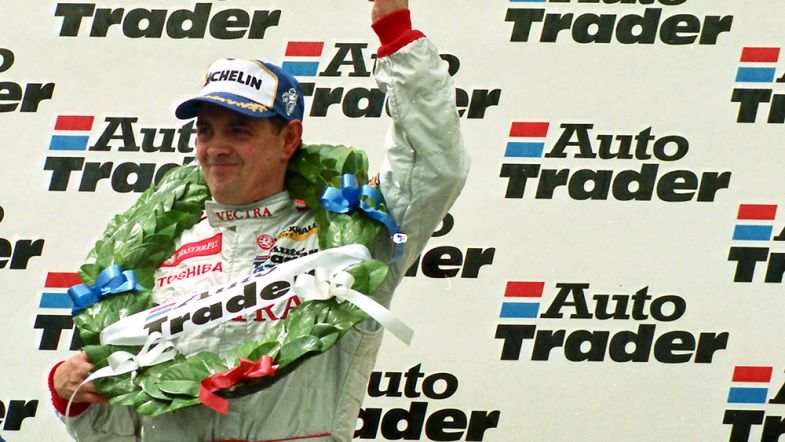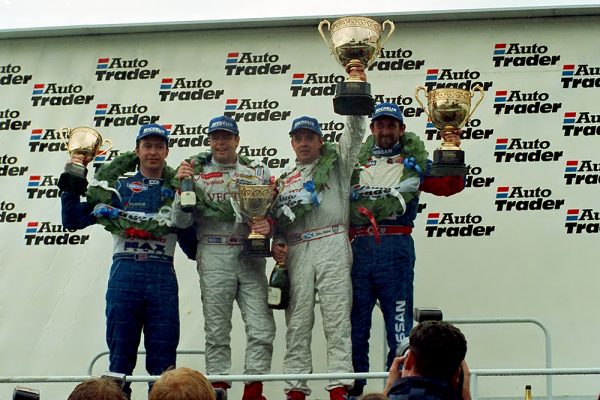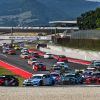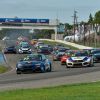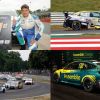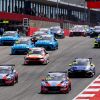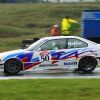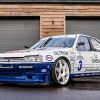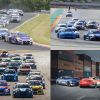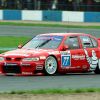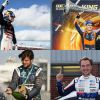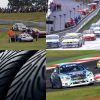Famous races: John Cleland remembers beating an F1 champion at Donington Park
As the HSCC Super Touring Car Challenge prepares to take on Donington Park for the first time, TouringCarTimes caught up with 1989 and 1995 British Touring Car Champion John Cleland to discuss ‘that’ race at Donington in 1998, which saw the Scot battle his way to the top step after what many hail as one of the greatest BTCC races of all time.
Backed up by a supporting cast of top touring car names including Alain Menu, Rickard Rydell, David Leslie, James Thompson and Yvan Muller, some serious weather and a riled up ex-Formula One driver looking to make a point, the stage was set for a classic BTCC encounter.
The 1998 BTCC season had seen a number of changes during the off season aimed at spicing up the on-track antics, including a new one-shot showdown qualifying format, a double length ‘feature’ race with mandatory pitstops and, perhaps most significantly, an easing of the driving standards regulations. The new rules basically meant that contact was fine, but you should have expected a fine and an endorsement if you punted the other driver off.
“At the end of the day, British Touring Cars has always been about rubbin’s racing,” Cleland told TouringCarTimes. “We don’t pussyfoot around but at the same time it’s not as brutal as NASCAR. You’ve got to bear in mind there were two dozen professional paid drivers, which is fairly significantly different to today’s British Touring Cars in as much as they’re mostly paying for their own affair and they’re not working for a manufacturer. But if we speared each other off the manufacturers got pissed off first of all. If you got that reputation of being just a rocket and spearing everyone off in to the gravel, what were the chances of you getting in to another manufacturer drive the following year?
“You had to have that fine line of having that reputation of being hard but fair and if you think back, very seldom did somebody disappear in to the gravel and stay there forever. You got a bit of hip and shoulder, you lost a back bumper or a door mirror or two but it wasn’t as blatant as taking somebody out.”
Cleland had a solid start to the 1998 season, finishing in the top ten in each of the first ten races, including his first win since 1995, the gap between victories due mainly to Vauxhall’s struggles after switching from the Cavalier to the Vectra between the ’95 and ’96 seasons. That win came at the series’ first trip to Donington Park of the year, with Cleland also finishing third in the feature race.
“In 1996, ’97, ’98 and ’99, none of the Vectras were really successful and then in ’99 Roland Dane [Triple Eight Racing team principal] employed engineer Ludo Lacroix and their 2000 Vectra, all of a sudden, was a bit of a class act because Ludo dialled in things that no-one had.
“I think, to be fair, if the Vectra had stayed with RML after ’96 I think [RML team principal, Ray] Mallock would have been able to extract race winning potential out of the car, he would have done his usual Mallock magic with it and found a way to make that car win races. The 96 car wasn’t actually the worst car in the world, it at least won a race and we were still somewhere in the hunt, but then when we got in to the Triple Eight cars, ’97, ’98 and so on and other than Donington, a fluke at Knockhill with Derek [Warwick, in 1998], and a really good race with Yvan at Brands Hatch [in 1999] the car won **** all. It never won anywhere around the world really, even the Germans had to go to flat-bottomed cars on German regulations before they could actually win races.
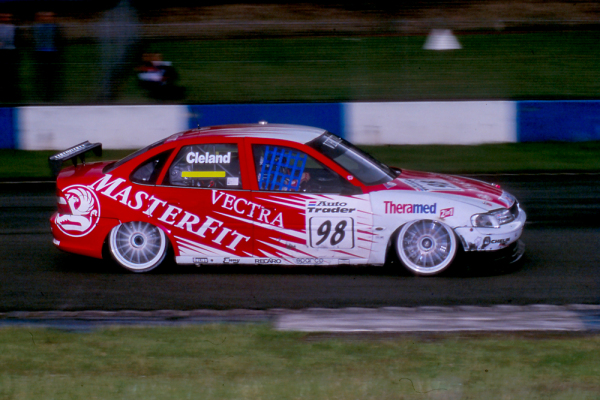
“There was a steady improvement over the years, it just inherently had an issue with the rear suspension, aerodynamically I’m not sure we ever really got it absolutely right, and that was quite crucial in those days to get the front end of those cars to work. I remember that being the thing with the Cavalier when I first drove it with the spoilers on it, with the aerokit to the front, I said to Mallock we’ll win the championship with this car.”
Adding to the excitement leading up to the second Donington meeting of 1998 was the inclusion of 1992 Formula One World Champion Nigel Mansell, which produced a potential spanner in the works for the Vauxhall driver.
Mansell had famously made one appearance in the BTCC before in 1993, competing in the TOCA Shootout at Donington Park, but his race ended six laps early after losing control at the Old Hairpin before colliding with Tiff Needell’s Cavalier, sending Mansell hard in to a tyre barrier underneath the bridge, knocking him unconscious.
His return to the BTCC was to attend to “unfinished business”, although his six-event stint in 1998 with West Surrey Racing’s Ford team was punctuated by incidents, which Mansell believed were due to being “targeted” by the other drivers.
“No there certainly wasn’t a target,” continued Cleland. “I went on record to say as long as my arse points south he will not win this race but that didn’t mean he had a target on his back, it meant whether he was a Formula 1 driver, Indycar champion or what didn’t mean he was going to come in and show the good ol’ boys’ of touring car racing how to win the race. That was never happening, everybody knew how quick and brave and fearless he was, but he didn’t have a target on his back.
“It wasn’t like all the touring car boys got together and said we’re going to punt him off somewhere, that was never the case. I think, all credit to Nigel, Alan Gow and Ford paid ****loads of money to have him there to bring in the public, and there’s absolutely no argument that it worked. Nigel was a huge draw for the ‘Sun reader’ in those days and they all piled through the door to see him.”
An incident in the sprint race saw Mansell start from the back of the grid in the feature, a tough task to pull any decent result out of the bag with a car that wasn’t exactly a front runner – as one journalist said in an end-of-season review, “it welcomed long bends as a vampire would sunrise.” Despite this, once the rain began to fall it became a completely different beast, and with a World Champion at the wheel the ‘Red 55′ became a serious contender for victory.
Cleland added: “The Ford wasn’t that great, most cars that are brilliant in the wet are invariably never that good in the dry and vice versa because for it to be good in the dry it’s usually stiffly sprung, it’s a bit twitchy and whatnot, but in the wet it’s a different animal. It wasn’t a race winning car in the dry, but in the wet, and with someone at the wheel who was brave he absolutely put it somewhere it shouldn’t have been. You could argue the Vectra was the same thing, it wasn’t particularly a race-winning car, although I did win a few races in it.”
The Vauxhall team approached rounds 11 and 12 of the 1998 season with confidence following Cleland’s double podium finish, including a race win, earlier in the year and knowing that it was a track that not only favoured their car, but was a personal favourite of the 1995 champion.
“We went in and we knew that because of the layout of the track and the layout of some of the corners, and I love Donington anyway, with all that combined we were going to be good there. The Vectra was always good at Donington. I got up on race day and it was pouring with rain, this was in the days where we had a morning warmup, and the first car out of the pits was Nigel and then me. Normally what you would do with a touring car is go in the garage and you’d tarp the pedal up with your left foot because the guys have had the brakes off overnight, so you bring the pedal back up. You make sure from a confidence point of view you’ve got a pedal.
“So I followed him out, no brake lights in the pitlane, down in to Redgate, still no brake lights and I thought ‘hmm, okay’ and he was going off like a scalded cat. I remember going down, and he probably didn’t expect me to do this, but I went right down the inside of him going in to the Old Hairpin and just touched door mirrors between him and mine, and it was more or less of a marker, a bit of a welcome to touring cars. Anyway, we ended up quickest in warmup and he came stomping in to the garage after the session “what was all that about?!” and all this and I just went ‘whoa, whoa, whoa, that’s how it’s going to be for the the rest of the day so get used to it.’
“The weather for the feature race got fairly bad, I got pushed out through the gravel at Coppice, somebody punted me out and I ended up bouncing through the gravel. I’d now fallen back down the pecking order, but I quietly worked my way back up because the car was brilliant. I was on the radio to my engineer, Mark Way was his name, and he said ‘what do you want for tyres in the pitstops’ and I said ‘it’s definitely wets, we need wets I can see black clouds’ and he replied ‘it doesn’t look like it from here’, and I said ‘no trust me, it’s gonna rain, we definitely, definitely need wets’. So we’d been having this conversation during the race but bit by bit we were picking the other cars off.
“We couldn’t have held the Nissans in the dry, however, they were pretty special cars. It should have won the championship, but they were letting both drivers kick the living daylights out of each other, David [Leslie] won a few, [Anthony] Reidy won a few when they should have been concentrating on one guy winning the championship but that’s neither here nor there.
“After the pitstops Nigel’s in front, so I radio in asking if he’s actually leading this race or are we coming up to lap him because I’m assuming that he was at the back of the grid, I hadn’t seen much of him. The reply is that I’m fighting him for the place here, he’s up there. To be fair to him, in the wet he was bloody brave, no argument, no matter what you put him in he was brave but front wheel drive is slightly different.
“In a wet race, what you would do is start to put more and more of the brake bias to the rear of the car, so you’d have much more bias on the rear than you would normally, there’d be a 50-50 split. As it would dry out in the race, if you left it like that the rear would start to lock up as you were giving it too much back brake so you’d wind it in a little bit more and a little bit more to the front.
“Nigel wasn’t doing that. I could see the back of the car getting a bit squirmy and I was catching him and catching him, finally going in to the chicane a few laps from the end he just locked it up, went straight on the grass and I nailed him, end of story.”
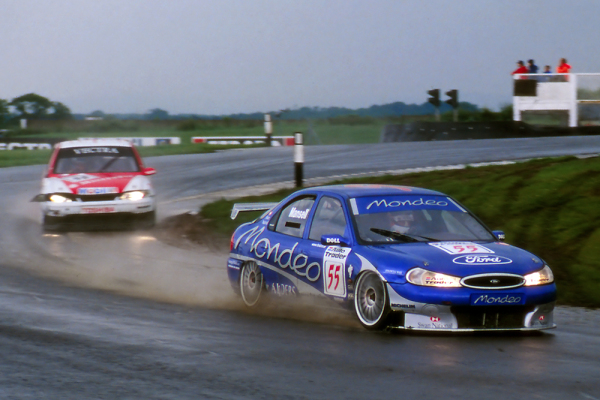
The sudden downpour, or rather deluge, which caught out many potential winners, including Honda’s James Thompson and eventual champion Rickard Rydell, had removed any tactical ability out of the pitstop cycle, as everyone had needed to change to wet weather tyres. Some brilliant driving from the top talent ensued, but it was eventually the ‘old guard’ of Cleland, Leslie and Warwick who came out on top, while Mansell was forced to settle for fifth after being adjudged to have passed Yvan Muller under yellow flags, promoting the future BTCC and four-time WTCC champion to fourth.
“There was still an interesting battle throughout, I think from memory at one point there were seven or eight cars in a battle between us, Muller was in there, the Nissans were in there until Reidy threw it off, Nigel was in there, I was, Derek was, I can’t remember who in the Renault was in there, James Thompson or somebody in a Honda was, any one of them could have won the race. One minute Muller led, then it was Nigel, then it was one of the Hondas, then it was a Nissan, I didn’t lead the race until I passed Nigel but to win it you have to be in it, it was about making sure you stayed out of the gravel and behaved.
“The podium was myself, David Leslie and Derek Warwick, with a combined age of about 165! That cunning and guile from years of experience, you hang in there, them young lads want to keep throwing it off. But between Nigel, myself, Derek and David it was two-hundred and something, average age about fifty-something!”
